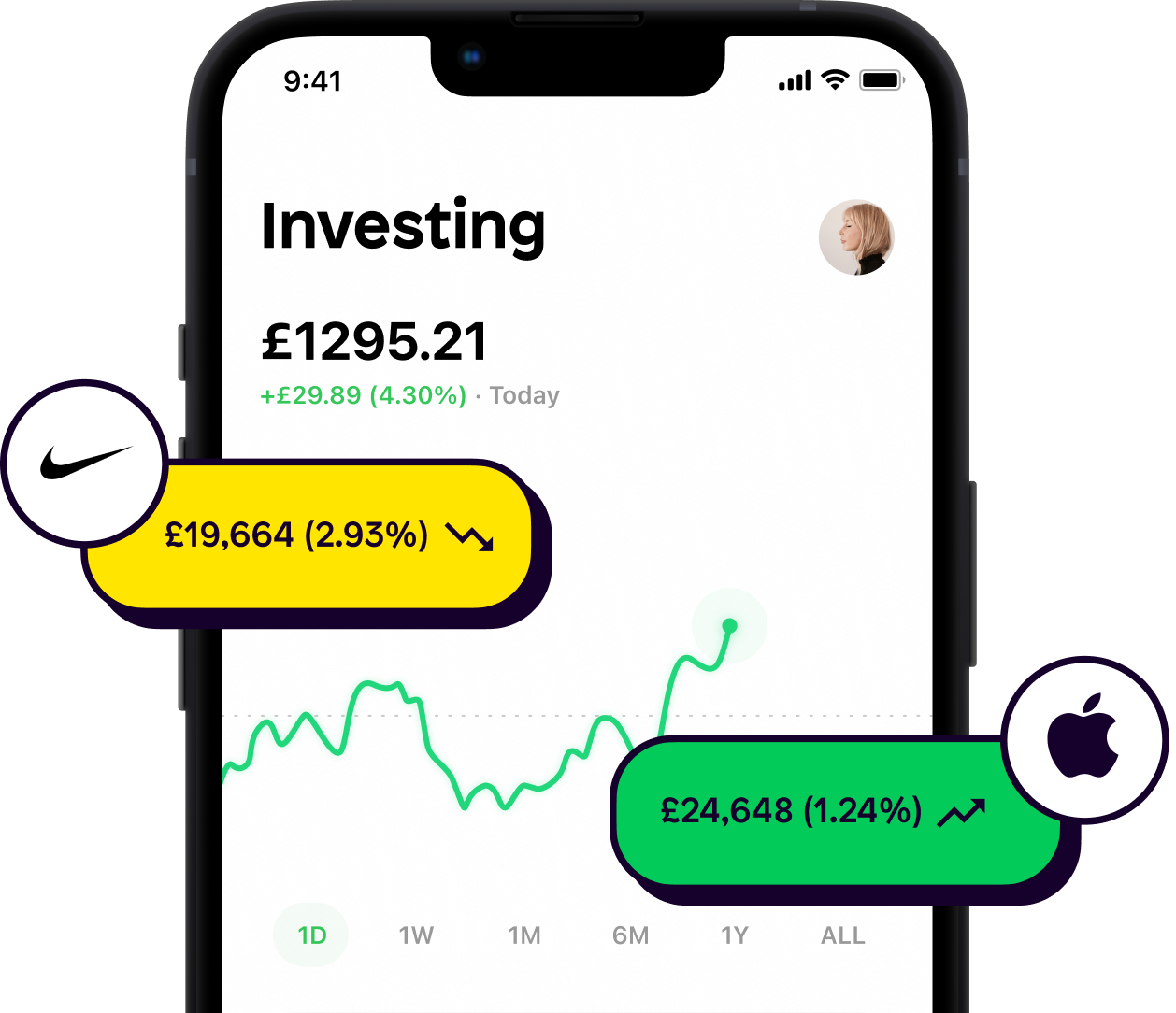A common reason why many people don’t start investing is because they don’t know straightforward investment strategies exist.
But what is an investment strategy? Do you need one? And how do you know which one aligns with your financial goals?
Well, these are pretty daunting questions. But breaking down daunting questions is our speciality over here.
So sit back, relax, and let us know which out of the following 7 strategies you plan to put into action via the Shares app.
TL;DR
1/ Buy and hold
2/ Value investing
3/ Growth investing
4/ Dividend investing
5/ Contrarian investing
6/ Index fund investing
7/ Momentum investing
🚨 Disclaimer: We’ll be using examples to explain each strategy. Remember that tax and fees are all deducted from an investor’s final profit.
Right, with the disclaimer out the way, it’s time to get stuck in.
1/ Buy and hold
Ah, the classic.
This strategy involves buying a stock with a long-term outlook, often for years.
Over time, the hope is the value of the investment will increase despite short-term market fluctuations.
You might think a company has been growing at a steady rate for some time, and that it’s going to continue to do so. After buying shares in the company, the idea is to hold onto them until you’re ready to sell them; hopefully for a profit!

3 years later, the business has prospered and shares are worth £50 each. Jay’s 100 shares are now worth £5,000 and so he decides it’s time to sell. Good work, Jay.
2/ Value investing
If value investors were retail shoppers, they’d be on the high street at 9 am on Boxing Day rushing for the latest sale. Why? Because they love a bargain!
You see, value investors search for undervalued stocks.
They look for companies that are trading at a price below their ‘intrinsic value’ (what an asset is worth) and weigh this against what they think it could be worth in the future.
The key to this? Measuring what a company is currently worth vs what it will be worth. Hey, we never said this one was easy!
A good value investor will buy low and sell once the market has corrected itself.
So, Lucy buys 200 shares at £7 a share. She plans to sell if they hit £10 (as this is what she deems the company’s intrinsic value to be). This would make for £600 profit. Nicely done, Lucy.

3/ Growth investing
Growth investors like to focus on the future and emerging markets.
They hone in on companies or sectors that are expected to experience significant growth in coming years. These companies may have the potential to generate above-average earnings in a short period of time and have plenty of opportunities to scale.
The risk here is not diversifying yourself enough.
By focusing too much on one market, you may be overexposing yourself to risk. A good growth investor will mitigate their risk through diversification.
Smart work, Oscar.

4/ Dividend investing
Some companies pay you based on how many shares you own, and this is what a dividend investor focuses their strategy on. Just remember, a company can cut its dividend at any time meaning returns aren’t guaranteed.
The idea is to reinvest these earnings and grow your stake in the company, taking advantage of compound interest.
The art with dividend investing is finding the sweet spot between a company paying too much vs a company who is paying too little.
Now, a company paying too much sounds great, but it might not have a sustainable cash flow to keep up the payments, whilst a company paying too little might not be attractive enough.
Keen to know which companies have been paying dividends consecutively for the last 50 years? Head over to the Shares app and check how much companies are paying you based on the amount of shares you own via our dividend collection!
Just remember, a company can cut its dividend at any time.
The overall dividend yield of his portfolio is 4%, meaning if he had £1,000 invested, he’d receive £40 in dividends each year. He’d also have all of his shares which still have potential to increase in price. This combined with his own continued investments mean he’s taking full advantage of compound interest. Good thinking, Alex.

5/ Contrarian investing
A contrarian investor is like that guy who hates the mainstream. iPhone? Absolutely not. Android all the way.
Jokes aside, they look for opportunities in sectors that are out of favour, believing that the market may have overreacted. They aim to buy when others are selling and sell when others are buying.

6/ Index fund investing
If index fund investors went to a water park, they’d be the first on the lazy river.
Why? Because index fund investors often like to sit back and let the market do its thing.
Index funds are passively managed investments that aim to replicate the performance of a market index, such as the S&P 500. This strategy allows you to technically buy one asset, yet have exposure to numerous assets, keeping you diversified.
Think of it like buying a hamper full of goods. You buy the overall hamper as well as what’s inside.
So, she invests in an index that tracks the S&P 500. That way, she’s gaining exposure to 500 companies within the US economy. Way to go, Kate!

7/ Momentum investing
Momentum investors focus on the recent trend of a stock or asset's price movement.
You might see a stock is performing well and believe it’s going to continue to do so. The strategy can be risky as it involves trying to time the market, which isn’t well suited for a beginner.
Tidy work, Ben.

So, there you have 7 investment strategies. Which is your favourite?
Make sure to download the Shares app and let us know! Follow us on our socials 👇
As with all investing, your capital is at risk.
This content is for educational purposes only. Shares does not provide investment advice. If you are unsure about anything, please seek advice from an authorised financial advisor. Shares is a trading name of Shares App Ltd. Shares App Ltd is an appointed representative of RiskSave Technologies Ltd, which is authorised and regulated by the Financial Conduct Authority.













